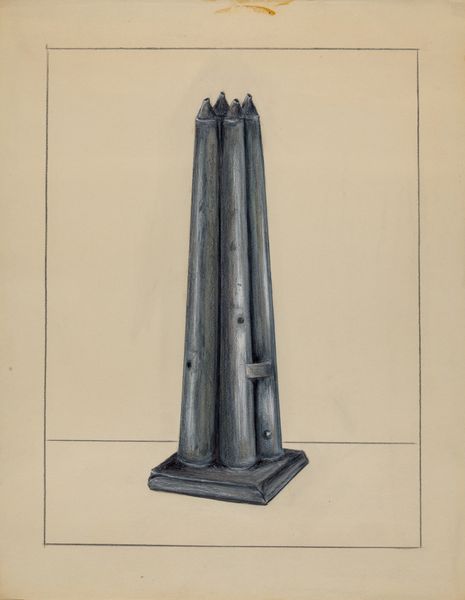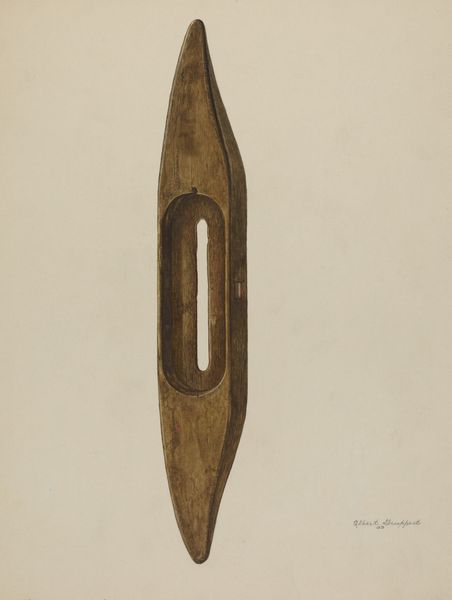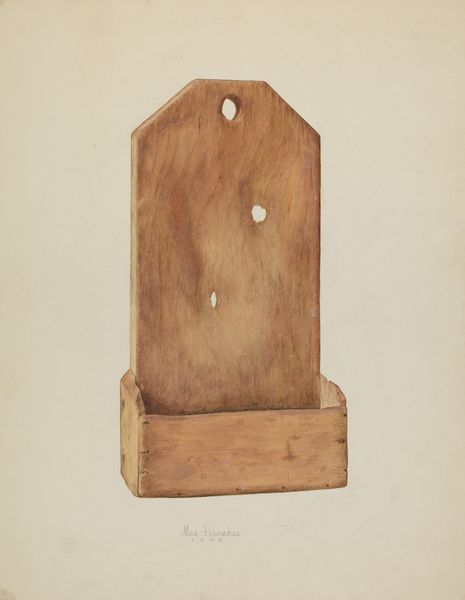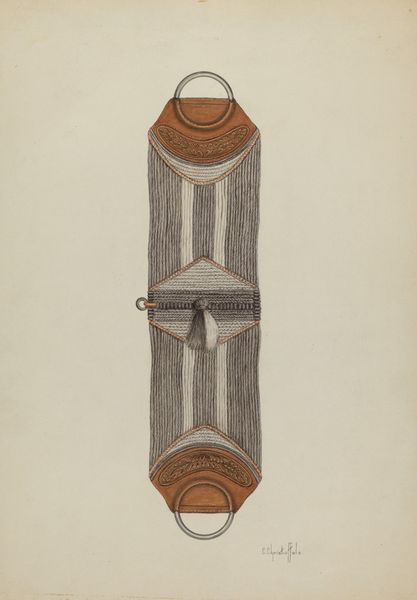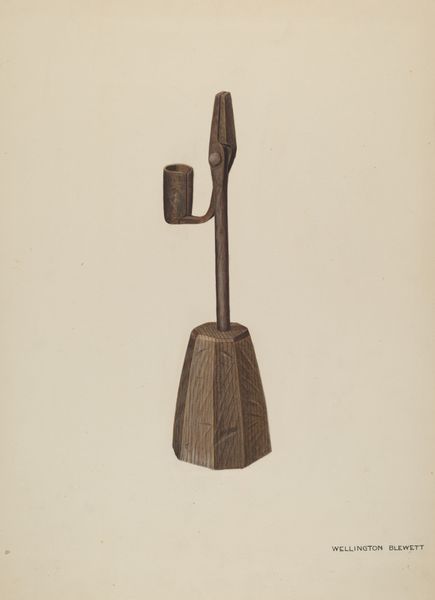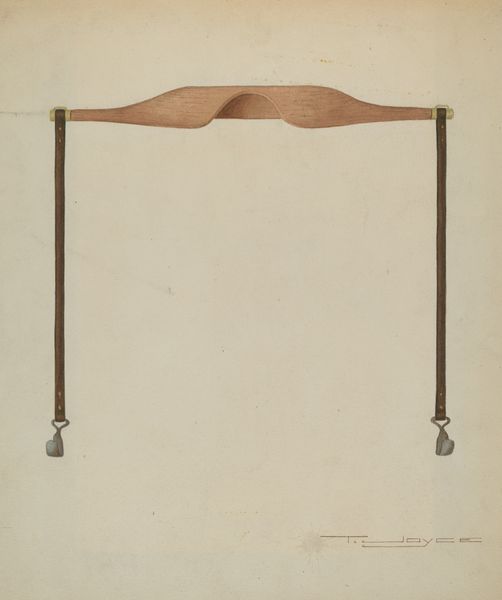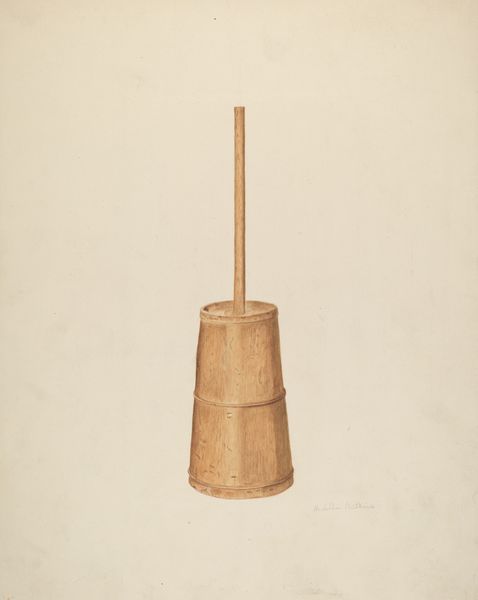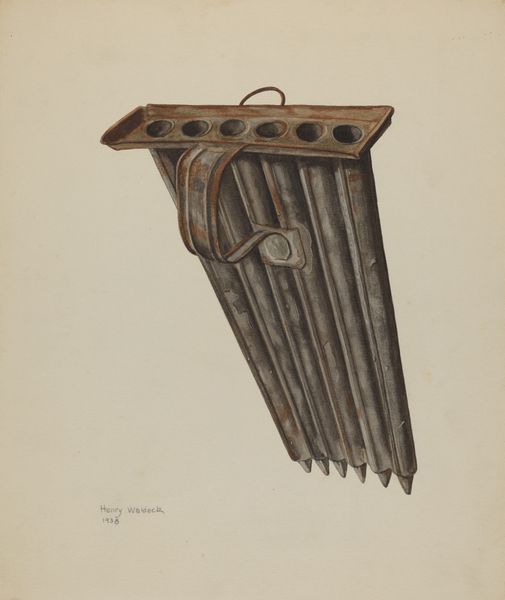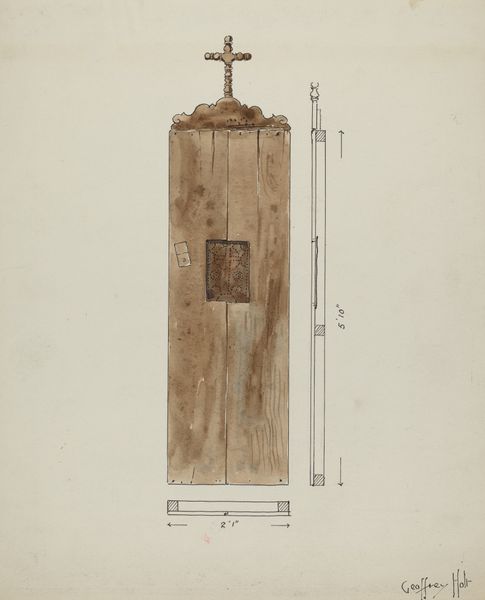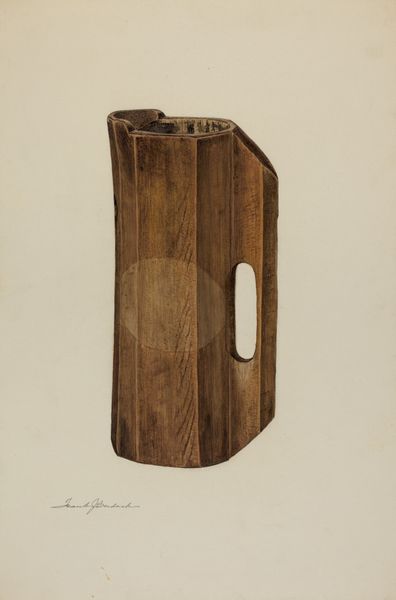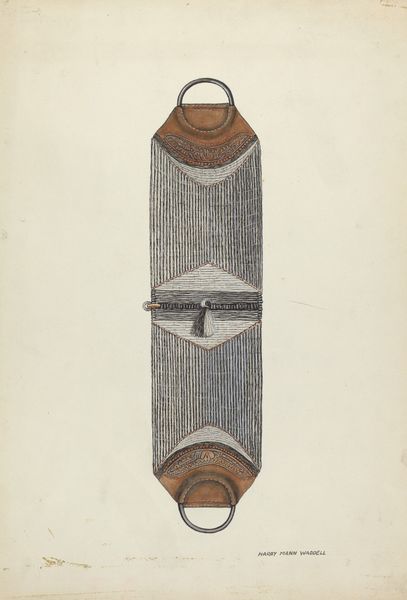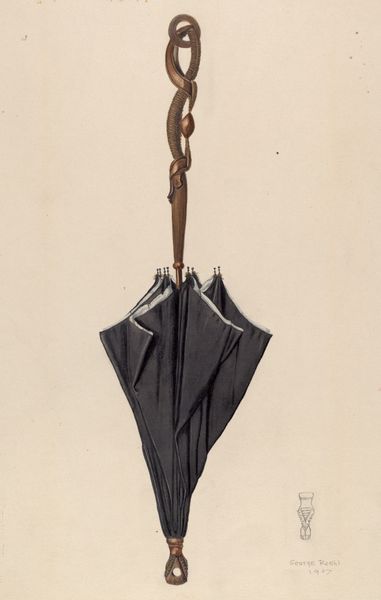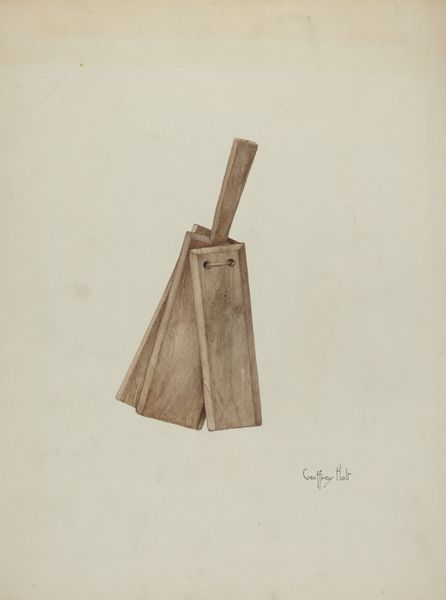
drawing, watercolor
#
drawing
#
watercolor
#
geometric
#
watercolour illustration
#
watercolor
Dimensions: overall: 36.5 x 24.8 cm (14 3/8 x 9 3/4 in.) Original IAD Object: 3' 1/2" high; 8 3/4" wide at side of base
Copyright: National Gallery of Art: CC0 1.0
Art Historian: We’re looking at “Candlestick (Ecclesiastical),” a watercolor drawing by Albert Pratt, created around 1939. Curator: My first impression? It feels austere, almost minimalist. The elongated, tapering form of the candlestick against the muted background has a kind of lonely grandeur. Art Historian: Loneliness is an interesting way to put it. From a historical standpoint, objects like these candlesticks served as physical embodiments of religious authority and ritual within the church. Their design often echoed architectural motifs of the period. Curator: Exactly. It reflects authority, but who is it serving? I'm drawn to the tension between the intended sacred purpose and what feels like the objectification of religious practice here. Does its stark geometry create reverence, or distance? The severe lines almost feel divorced from spirituality. Art Historian: It's crucial to remember the era it was created in; design in the 1930s leaned heavily on functionalism and a sense of streamlined efficiency. Perhaps Pratt, through this piece, wanted to communicate a sense of unadorned reverence—rejecting ostentation during a time of social and economic difficulty. Curator: Perhaps, but who decided what constituted “unadorned” or “reverent?" There’s an argument to be made that the visual language of austerity is not inherently neutral. It communicates something specific about power dynamics within religious institutions – ones which might privilege certain groups, practices and ideologies. This isn't just about an object; it's about representation. Art Historian: That's a valuable point to consider. Pratt's composition, rendered with watercolor, creates an ethereal feel, and reminds me that ecclesiastical items like this were mass produced and circulated, embedding these values throughout religious and cultural landscapes. Curator: I see what you mean; that gives us more food for thought, especially considering accessibility and the broader influence these kinds of mass-produced pieces had on popular perception. It’s like looking into the intersection of faith, aesthetics and social influence all in one piece. Art Historian: Absolutely. By situating this image in its socio-political context, we’ve explored layers of intent, interpretation, and ultimately, impact. Curator: Indeed. This seemingly simple drawing opens a window onto conversations about institutional power, visual language, and who gets to shape our spiritual and aesthetic landscapes.
Comments
No comments
Be the first to comment and join the conversation on the ultimate creative platform.
